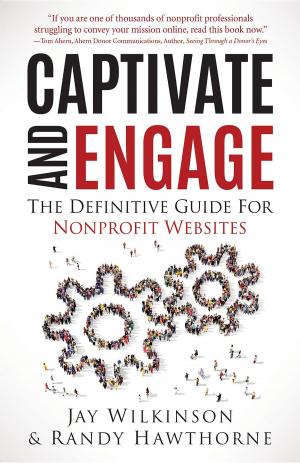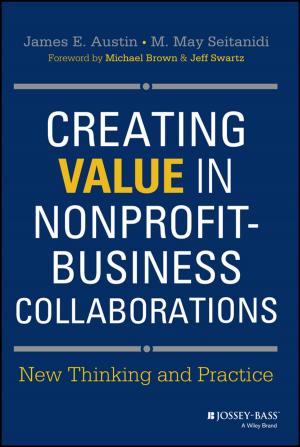Partner, Innovate, Evaluate: Increasing Rotary’s Impact
Business & Finance, Economics, Sustainable Development, Industries & Professions, Nonprofit Organizations & Charities| Author: | Quentin Wodon | ISBN: | 9781946819017 |
| Publisher: | Quentin Wodon | Publication: | February 15, 2017 |
| Imprint: | Smashwords Edition | Language: | English |
| Author: | Quentin Wodon |
| ISBN: | 9781946819017 |
| Publisher: | Quentin Wodon |
| Publication: | February 15, 2017 |
| Imprint: | Smashwords Edition |
| Language: | English |
If Rotary clubs, districts and the organization as a whole are to have a larger impact, they need to put together more projects that rely on partnerships, are innovative, and are evaluated properly. Not all Rotary projects need to include partnerships, innovation, and evaluation. But the organization and the communities it serves would be better off if more projects did. This is because partnerships, innovation, and evaluation can increase the quality, scope, and reach of our work, thereby helping clubs, districts, and Rotary as a whole to achieve its mission of service above self.
Partnerships help to implement larger projects and benefit from the expertise of organizations that are among the best in their field. Partnerships also generate visibility and media coverage. Partnerships have a cost, since efforts are required for collaborations to work. But if partnerships deliver scale, expertise, or visibility, the gains often outweigh the costs. This is the case for the organization as a whole, but it is also the case at the level of Rotary clubs and districts.
Innovation is even more important than partnerships to achieve larger impacts and discover better ways to serve communities. If Rotary experiments and innovates, pilot projects that prove successful can be scaled up by other organizations with deeper pockets, thereby achieving much larger impact.
Without in-depth monitoring and evaluation, innovation does not help as much to achieve impact because results on the ground must first be demonstrated at the pilot stage for a promising intervention to be scaled up. Innovation and evaluation are like twins: they work best as a pair. Monitoring and evaluation are also needed for Rotary International as well as clubs and districts to learn internally from both highly successful and less successful projects.
All three ingredients, namely partnerships, innovation, and evaluation, are important to increase the impact of Rotary's work. In order to encourage clubs and districts as well as Rotary International to move in that direction, this book suggests with case studies how increasing impact through partnerships, innovation, and evaluation can be done. Together the case studies provided in the book cover polio eradication as well as the six areas of focus of the Rotary Foundation.
It is hoped that the book and its case studies will prove useful to Rotarians and others interested in those topics. They are meant to inspire Rotary and other service organizations to harness the promise of partnerships, innovation, and evaluation.
The book is published as part of the Rotarian Economist Short Books series. The series provides rapid and practical introductions to topics related among others to volunteer work, service clubs, nonprofits, and the areas of focus of the Rotary Foundation of Rotary International (promoting peace, fighting disease, providing clean water, saving mothers and children, supporting education, and growing local economies). The book series is associated with the Rotarian Economist blog.
If Rotary clubs, districts and the organization as a whole are to have a larger impact, they need to put together more projects that rely on partnerships, are innovative, and are evaluated properly. Not all Rotary projects need to include partnerships, innovation, and evaluation. But the organization and the communities it serves would be better off if more projects did. This is because partnerships, innovation, and evaluation can increase the quality, scope, and reach of our work, thereby helping clubs, districts, and Rotary as a whole to achieve its mission of service above self.
Partnerships help to implement larger projects and benefit from the expertise of organizations that are among the best in their field. Partnerships also generate visibility and media coverage. Partnerships have a cost, since efforts are required for collaborations to work. But if partnerships deliver scale, expertise, or visibility, the gains often outweigh the costs. This is the case for the organization as a whole, but it is also the case at the level of Rotary clubs and districts.
Innovation is even more important than partnerships to achieve larger impacts and discover better ways to serve communities. If Rotary experiments and innovates, pilot projects that prove successful can be scaled up by other organizations with deeper pockets, thereby achieving much larger impact.
Without in-depth monitoring and evaluation, innovation does not help as much to achieve impact because results on the ground must first be demonstrated at the pilot stage for a promising intervention to be scaled up. Innovation and evaluation are like twins: they work best as a pair. Monitoring and evaluation are also needed for Rotary International as well as clubs and districts to learn internally from both highly successful and less successful projects.
All three ingredients, namely partnerships, innovation, and evaluation, are important to increase the impact of Rotary's work. In order to encourage clubs and districts as well as Rotary International to move in that direction, this book suggests with case studies how increasing impact through partnerships, innovation, and evaluation can be done. Together the case studies provided in the book cover polio eradication as well as the six areas of focus of the Rotary Foundation.
It is hoped that the book and its case studies will prove useful to Rotarians and others interested in those topics. They are meant to inspire Rotary and other service organizations to harness the promise of partnerships, innovation, and evaluation.
The book is published as part of the Rotarian Economist Short Books series. The series provides rapid and practical introductions to topics related among others to volunteer work, service clubs, nonprofits, and the areas of focus of the Rotary Foundation of Rotary International (promoting peace, fighting disease, providing clean water, saving mothers and children, supporting education, and growing local economies). The book series is associated with the Rotarian Economist blog.















